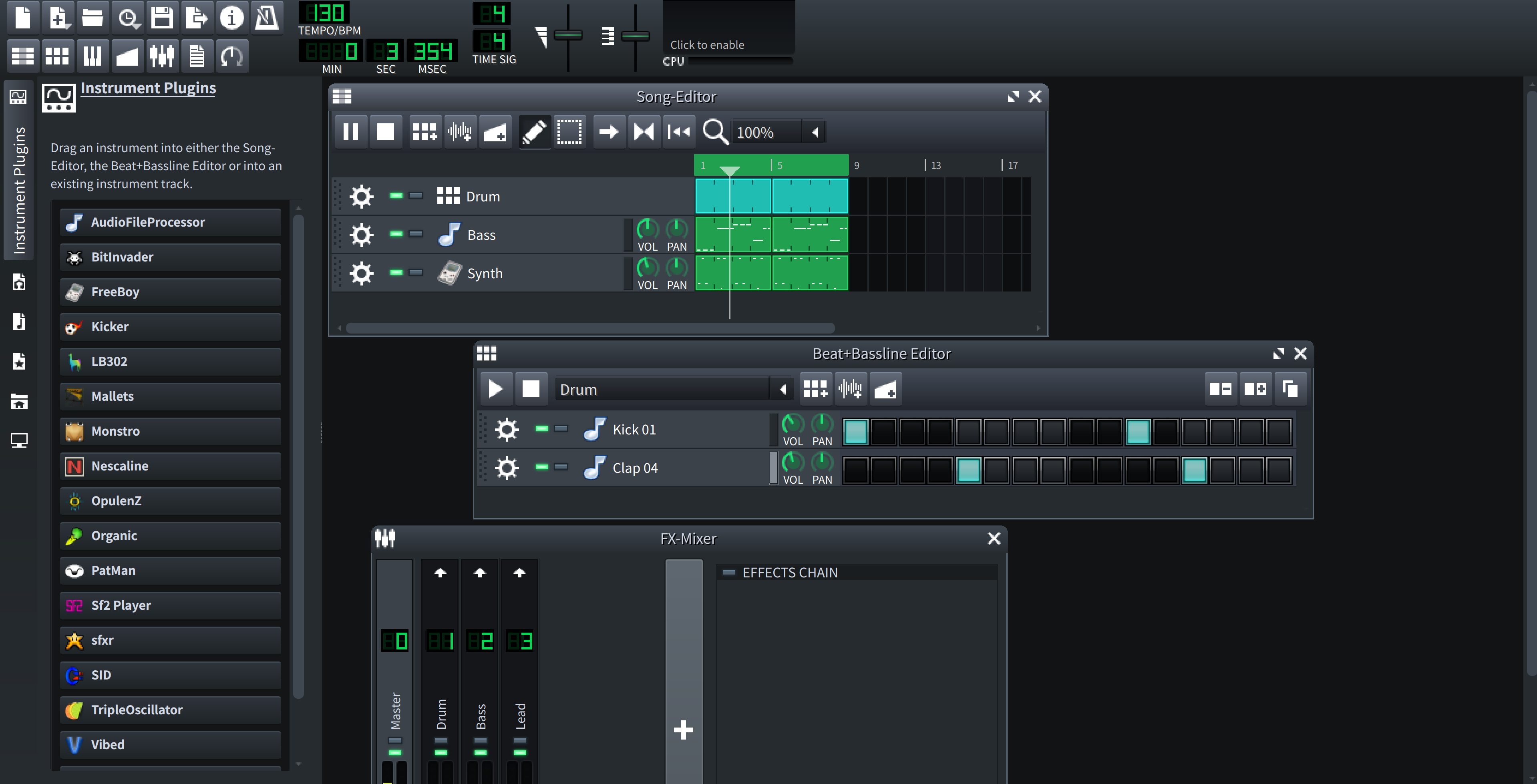Known issue, unfortunately. Closing, marking as duplicate of #455, #2209, #1913, #82.
Edit: Reopened. :)
Quote from @BaraMGB
In the arch Linux wiki is an article which explains how to setup several desktop environments on hidpi resolution screens. This can help in the future for testing. https://wiki.archlinux.org/index.php/HiDPI
Quote from @michaelgregorius:
@Wallacoloo Yes, there are still several places where the fixed font sizes are used. For example in the song editor's tracks, also in lots of plugins and other places where custom widgets are used. I'd say there is still tons of work to do.
Here is a list of places where
pointSizeandpointSizeFare still called:$ grep -l -r pointSize | sort | uniq include/gui_templates.h plugins/audio_file_processor/audio_file_processor.cpp plugins/carlabase/carla.cpp plugins/DualFilter/DualFilterControlDialog.cpp plugins/ladspa_browser/ladspa_browser.cpp plugins/monstro/Monstro.cpp plugins/patman/patman.cpp plugins/stk/mallets/mallets.cpp plugins/vestige/vestige.cpp plugins/VstEffect/VstEffectControlDialog.cpp plugins/zynaddsubfx/ZynAddSubFx.cpp src/core/audio/AudioAlsa.cpp src/core/audio/AudioJack.cpp src/core/audio/AudioOss.cpp src/core/audio/AudioPortAudio.cpp src/core/audio/AudioPulseAudio.cpp src/core/audio/AudioSdl.cpp src/core/midi/MidiAlsaRaw.cpp src/core/midi/MidiAlsaSeq.cpp src/core/midi/MidiOss.cpp src/core/Track.cpp src/gui/AutomationPatternView.cpp src/gui/editors/AutomationEditor.cpp src/gui/editors/PianoRoll.cpp src/gui/PianoView.cpp src/gui/SetupDialog.cpp src/gui/widgets/ComboBox.cpp src/gui/widgets/EffectView.cpp src/gui/widgets/EnvelopeAndLfoView.cpp src/gui/widgets/FxLine.cpp src/gui/widgets/GroupBox.cpp src/gui/widgets/InstrumentFunctionViews.cpp src/gui/widgets/InstrumentMidiIOView.cpp src/gui/widgets/InstrumentSoundShapingView.cpp src/gui/widgets/Knob.cpp src/gui/widgets/LcdWidget.cpp src/gui/widgets/LedCheckbox.cpp src/gui/widgets/MeterDialog.cpp src/gui/widgets/MidiPortMenu.cpp src/gui/widgets/ProjectNotes.cpp src/gui/widgets/SideBarWidget.cpp src/gui/widgets/TabBar.cpp src/gui/widgets/TabWidget.cpp src/gui/widgets/TextFloat.cpp src/gui/widgets/VisualizationWidget.cpp src/tracks/BBTrack.cpp src/tracks/InstrumentTrack.cpp src/tracks/Pattern.cpp src/tracks/SampleTrack.cppDo you want to open a new issue for some of the remaining changes or reuse this one?














 -And that is solved in >1.2.1.
What your screenie shows is that LMMS has simply has way to small text in general, but that is a different issue, and is of cause related to accessibility, -but also general usage, because text that small does lead to headache and other ergonomic issues
-And that is solved in >1.2.1.
What your screenie shows is that LMMS has simply has way to small text in general, but that is a different issue, and is of cause related to accessibility, -but also general usage, because text that small does lead to headache and other ergonomic issues 

 (AAS-edit)
(AAS-edit)
Edit: tresf, added checklist and workaround:
8a39302571c96e130dd6db1f466011760fd7f1ecreverted.reimplemented bbedfa9. (Qt5.6+)Unfortunately some HiDPI displays don't scale properly. There's more discussion around this here: https://github.com/LMMS/lmms/pull/4800#issuecomment-461681138
Or permanently (use with caution!)
This is my first time submitting an issue here, so If I'm doing it incorrectly, please let me know.
I'm on Windows 10 and would like to use LMMS, however, being on a Surface Book with a high DPI display, I can't comfortably use this software without squinting to see the various menu items and text. This application doesn't seem to scale when I scale Windows up. Is this a known issue or is it just me?